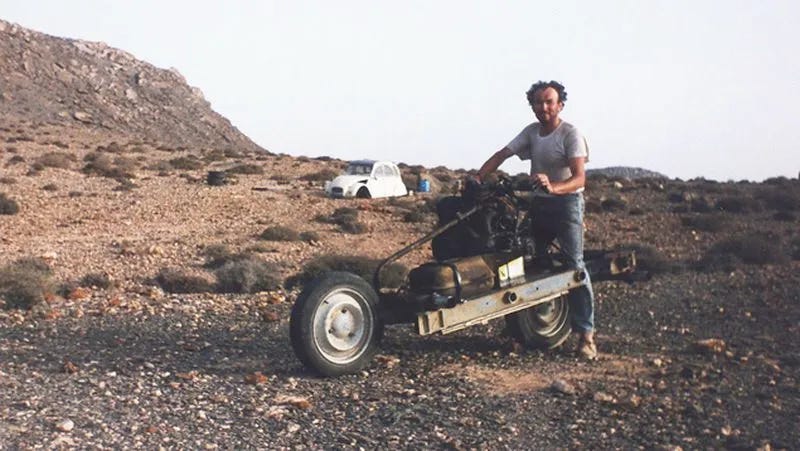Many of you who subscribe to these posts were at the studio on Tuesday — but for those who weren’t — this one will be the beginning of a series structured around the Yoga Sutras of Patanjali.
If you prefer to listen vs. read, I’m putting read outs that’ll include the actual text here »
The Sutras (which translates literally to “threads”) are a compilation of concise instructions designed to expound the meaning of yoga practice. Written around 200 BCE by the yoga sage known as Patanjali, they are a foundational text for anyone seeking deeper meaning in their personal yoga practice.
This is the version I’m reading, in case you want to have it on hand yourself. It has commentary from Sri Swami Satchitananda, who was one of the more prominent teachers to bring yoga to the west in the 1900s, and even made an opening speech at Woodstock, flying in via helicopter to the stage.
~ Intent ~
I felt this would help give structure to these reflections, and it will be interesting (to me at least) to see what kind of arc they end up taking when combined with the themes that you all bring to class each week.
I’ll be writing not as a teacher or scholar of this text (because I’m not), but as a student — simply driven by curiosity to see what happens when the language of these threads is invited into a regular community-based asana practice.
Perhaps it will also serve as a jumping off point for some of you in exploring the many layers and perspectives one can find when they start to examine the whys, wherefores, and whiterto’s around this thing we call yoga.
These thoughts I write are my own and as such are limited to my personal perspective. As we’ll see in the Swami’s comments on the first sutra, there’s a big difference between thinking about yoga and doing it. So take them for what they are worth, and keep these words (and all others, really) always secondary to your own exploration of the underlying ideas.
We take so much for granted in our lives. Let’s not miss the quiet work.
I think there is truly nothing more sacred than the time we take to look inward and examine the nature of our experience as conscious beings.
For me, yoga has provided a useful context for conducting that quiet work.
It’s the stuff that nobody else really sees and nobody can actually coach.
The doorway to that work is not waiting at the end of a successful career, after brushing your teeth, or finally being able to do a handstand — nor is it found behind the flaps of a sweat lodge or on a plane ride to India…
It is always found here and now. So is yoga.
We are practicing arriving “there”.
That’s why it’s so damn useful.
Let’s begin.
अथ योगानुशासनम्
Atha Yoga Anushasanam - Now begins the discipline of yoga.
ah-tah yoh-gah-nu-shah-sah-nam
This is the opening sutra of Patanjali's Yoga Sutras, consisting of just three Sanskrit words:
Atha (अथ) - Now, an auspicious beginning
Yoga (योग) - Union, integration
Anushasanam (अनुशासनम्) - Exposition, instruction, discipline
In the most bland sense, it says: “now begins the exposition of yoga”.
As in, Patanjali started his work by saying: “Ok, I’m about to explain yoga”.
You could easily stop there, and many do.
But we should remember that this work is a compilation of threads (sutras), and the intent is therefore not to be exhaustive with the language, but to be concise and to create inroads towards the deeper insights. Every word, placement, and syllable can prove useful to that end.
Yoga, taken as a spiritual path, is not something that can be condensed into a prosaic essay or novel — simply because it’s inevitably experiential.
Not with all the ink and paper in the world could you capture the vast multiplicity of human experience. Our lives unfold in every direction all at once. Even as you focus clearly on one thing, hundreds of others are arising just outside the spotlight of our day-to-day attention.
The great works of this nature tend to take either this form, with inductive-poetics (like the Tao Te Ching), or that of the epic, where characters act out the ideas as part of parables or myths (like the Bhagavad Gita).
In the culture of today we tend to expect a detailed instruction manual for useful ideas. Poetry is seen more as a frivolous enjoyment or as unnecessarily vague and cryptic, rather than as insight generating language. Academics and scientists are the ones who describe things that ‘really matter’, and every discipline of thought from economics to psychology has their own set of experts entrusted with laying down the exposé of their field through one work or another.
In light of this, I think it’s useful to for us to think of the Sutras more so as a manual for learning the scientific method itself, than as an manual for learning some particular science.
Just as Socrates would guide his students through careful questioning to help them arrive at their own understanding through the Socratic Method, the Yoga Sutras provide a framework for personal investigation and self-discovery, not an answer key.
They don't just tell us what yoga is — they guide us in experiencing it for ourselves.
The distinction is down to prioritizing the facilitation of direct experience over mere theoretical knowledge. The most resilient (and useful) wisdom comes not from memorizing facts, but from developing the capacity to investigate and understand through firsthand experience.
You can read the manual to your car 100 times, but could you truly say you understand your car until you actually drive it? Do you know how to change a tire until you’ve tried to loosen the lug nuts and realized how impossible they are to remove with the tiny tire iron they give you?
Let’s be honest, most of us have never read that car manual. Do you even have one still? Once you learned how to drive, the priority became getting from A to B. Who really cares about knowing when to rotate the tires or what kind of oil to put in the engine? Leave it to the mechanics!
But there is great liberation in understanding why the car goes, beyond simply knowing how. Gas pedal, brake, directionals, shifter, done, right? Eat, shit, drink water, go to school, make money, make kids, die—that’s it!
Maybe for some, that’s enough. In a way, I envy them. In the words of Kurt Cobain:
I wish I was like you, easily amused.
I guess whether we pursue that more demanding level of freedom depends on where you’re intent on going with this life. If you’re just driving around town, to the grocery store, to the cafe, you can totally get by without knowing how to change a tire. GEICO will show up within a few hours, and you can call an Uber by tapping your thumbs on a magic glass box in your pocket, worst comes to worst.
But if you’re intent on going “out there” so to speak, to pushing the envelope and discovering for yourself what the substrate of this life is really made of, you definitely want to know at least how to change that tire.
At some point, through disciplined learning and study, you can come to know the principles of internal combustion so well that even if you crash that car deep in the desert you can build a motorcycle from it and ride out of certain death.
So let’s look again at these three words.
Atha (अथ) - Now/Begins
Yoga (योग) - Yolking/Union
Anushasanam (अनुशासनम्) - Discipline/Practice
NOW BEGINS THE DISCIPLINE AND PRACTICE OF UNITING MIND AND BODY.
Now!
Now is the point at which the practice starts.
The beauty of this potentially overlooked instruction is that it’s so simple.
Yoga doesn’t start tomorrow at 9am when your favorite teacher is scheduled to instruct an asana that you find agreeable. Yoga is now.
Yoga begins when you arrive in the now.
So it follows that it’s practice of yoga is essentially discovering how to arrive (in the now) and how to remain there. Similar to surfing, the majority of the work is getting to the break. Nobody tells you when you start surfing that 90% of the time is spent on dragging your body on a piece of foam through walls of white water getting tumbled and pushed back 3 feet for every 4 you gain. That for the first years you’ll work your butt off getting to the take off zone, only to fall every time a good wave comes by. Then you’ll realize you didn’t have the right board for a beginner and buy a new one. Then you’ll try going out on a big day and get absolutely pounded while watching Australian 5 year olds rip head high waves pushed in by their dads.
It’s always hard. If it isn’t, in my opinion, you aren’t doing it right.
If you don’t give up, and commit to the work, one day you’ll notice that you’re catching every wave you paddle for. Riding on swells of solar energy pulsing through the massive bodies of water clinging to the rock floating in space that we all live on. Making huge turns, throwing spray, putting toes on the nose — none of that comes to they who cannot embrace the moment.
Luckily we have this practice to teach us over and over again how to do it.
अथ योगानुशासनम् - Atha Yoga Anushasanam
NOW begins the discipline of yoga.
Mere philosophy will not satisfy us. We cannot reach the goal by mere words alone. Without practice, nothing can be achieved.







